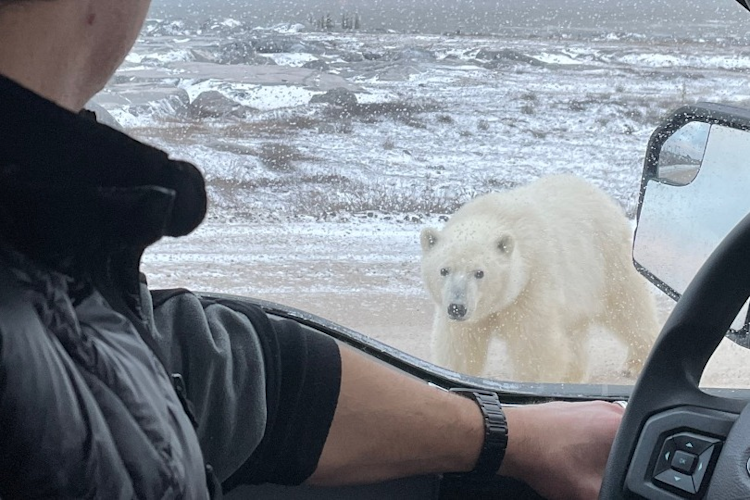Bozeman, MT (July 16, 2015) - Scientists have long speculated that polar bears forced ashore by melting ice, away from their seal prey, may enter a state of "walking hibernation" that slows their metabolism and saves energy.
But new research published in the journal Science does not support those earlier suggestions. Researchers found that polar bears do not possess a unique ability to withstand long fasts by triggering physiological changes similar to those seen in hibernating animals—a state dubbed "walking hibernation."
John Whiteman, a doctoral student at the University of Wyoming, led the logistically challenging and intensive study, working in cooperation with scientists at UW, USGS, U.S. Fish and Wildlife Service, and Polar Bears International.
The findings show that polar bears are physiologically incapable of entering a special energy-saving metabolic state. Scientists did find, however, that polar bears have a special adaptation to swimming in frigid waters; one that protects their interior body temperature and helps prevents hypothermia. They do this by temporarily cooling their outermost core tissues to form an insulating shell—a phenomenon known as regional heterothermy.
"The findings come at a time when polar bears in some parts of the Arctic are spending more time on land, away from their seal prey, due to retreating summer sea ice," said Dr. Steven C. Amstrup, chief scientist at Polar Bears International and a co-author of the paper. "This study shows that polar bears have no special trick that will allow them to prolong their ability to survive those long periods without food. Instead, they lose body condition just like any other food-deprived mammal."
Amstrup said these new understandings are important. "The take home message corroborates past findings," he said. "There is a limit to how long polar bears can persist as sea ice continues to decline. They have no special metabolic ability to prolong that time frame, and if we want polar bears in our future, we need to stop sea ice decline."
He added that the work is unlikely to be repeated given the cost and logistical challenges.
The National Science Foundation, USGS, USFWS, and the Environmental Protection Agency provided funding for the unprecedented effort, which entailed collaring two dozen polar bears in the Beaufort Sea north of Alaska, fitting them with temperature loggers, and tracking and monitoring them on sea ice, in the water, and on land from 2008-2010.
About Polar Bears International
Polar Bears International's mission is to conserve polar bears and the sea ice they depend on. Through media, science, and advocacy, we work to inspire people to care about the Arctic, the threats to its future, and the connection between this remote region and our global climate.
















